The most beloved animals on the planet are penguins. Their tuxedo coloring, adorable waddle, and their cute faces make them one of the most beloved creatures in the world.
Humans can’t help penguins anywhere globally, from Africa’s equatorial deserts to Scandinavia’s Nordic meadows, but they may be empathetic toward the watery, flightless creatures.
Many folks mistakenly believe that penguins only live in the North and South Poles, but in reality, they live throughout the Southern Hemisphere, especially the Antarctic.
There are 18 species of penguins found in the world. The Emperor is the tallest penguin at more than 1m and can range to 1.3m in height.
Scientists disagree regarding penguins’ taxonomy and genetic ties, but they all agree that there are at least 18 species on the planet right now.
Many people are not aware of penguins’ scientific names, but first of all, they might not know about the actual name of penguin’s species. So, let’s have a quick look at the exact name of the species of penguins with its scientific name.
Today, we will dive deep and understand – " The scientific name of all penguin’s species" Are you ready? Let’s go!
Most of the penguin species of the 18 species are threatened or endangered.
The eighteen species are Emperor, King, Royal, Adélie, Macaroni, Gentoo, Galapagos, Magellanic, Humboldt, African, Snares, Fiordland, Little Blue, Yellow Eye, Erect Crested, Northern Rockhopper, Southern Rockhopper, and Chinstrap.
In this article on the scientific name of all species of penguins, we are going in-depth to help you understand it in a better manner.
We have covered a whole article to comprehend the penguins’ names. Now, in this article, you will learn about where these names come from, scientific names, and we would like to share all the important points about it, including everything that you want to know, so that you will receive complete information about it.

penguins'
Where do penguins get their scientific names?
In taxonomy, penguins are distinguished from other birds (Aves) at the order level: Sphenisciformes. This order includes all penguins that have ever existed.
The word breaks down into sphenic—Latin for wedge, and - form, meaning shape. Penguins are wedge-shaped!
The branch of the family is the Spheniscidae and describes only penguins today.
In this perspective, the first section of the word is already quite similar to you, “wedge-shaped,” while the - dae ending is a denotation of likeness.
Penguins (order Sphenisciformes, family Spheniscidae) are flightless aquatic birds that live nearly entirely in the southern hemisphere, particularly in Antarctica.
Most penguins eat krill, fish, squid, and other forms of sea creatures caught while swimming underwater. They spend about half their life on land and half in the oceans.

Different species of penguins
Is there a list of all penguin species with their scientific names?
Even though almost all penguin species live in the Southern Hemisphere, they don’t exist in frigid climates like Antarctica. Only a few species of penguins live as far south near the poles.
The temperate zone is home to several species, one of which, the Galapagos penguin, dwells near the equator.
Most scientists recognize the 18 species of penguins. Here is a list of penguin species.
| Sl Number | Name | Scientific Name |
| 1 | Emperor Penguins | Aptenodytes Forsteri |
| 2 | King Penguins | Aptenodytes Patagonicus |
| 3 | Adélie Penguins | Pygoscelis Adeliae |
| 4 | Gentoo Penguins | Pygoscelis Papua |
| 5 | Chinstrap Penguins | Pygoscelis Antarcticus |
| 6 | Northern Rockhopper Penguins | Eudyptes Moseleyi |
| 7 | Southern Rockhopper Penguins | Eudyptes Chrysocome |
| 8 | Macaroni Penguins | Eudyptes Chyrsolophus |
| 9 | Royal Penguins | Eudyptes Schlegeli |
| 10 | Fiordland Crested Penguins | Eudyptes Pachyrhynchus |
| 11 | Erect-Crested Penguins | Eudyptes Sclateri |
| 12 | Snares Island Penguins | Eudyptes Robustus |
| 13 | Yellow-Eyed Penguins | Megadyptes Antipodes |
| 14 | Little Penguins (Also Known As A Fairy Or Little Blue Penguins) | Eudyptula Minor |
| 15 | Magellanic Penguins | Spheniscus Magellanicus |
| 16 | Humboldt Penguins | Spheniscus Humboldti |
| 17 | African Penguins (Formerly Known As Black-Footed) | Spheniscus Demersus |
| 18 | Galápagos Penguins | Spheniscus Mendiculus |
Some scientists recognize a 19th species: the white-flippered form of fairy penguin, Eudyptula albosignata.
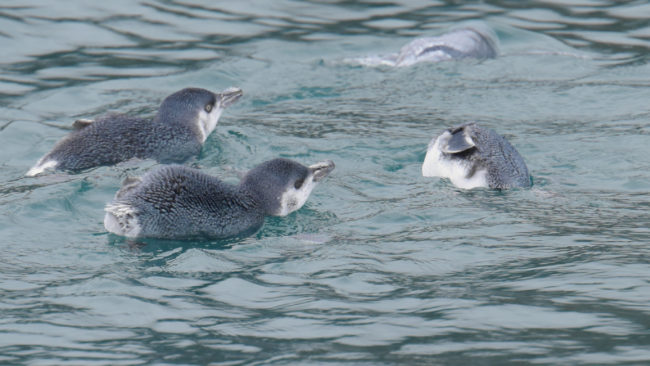
white-flippered form of a fairy penguin
What do these different scientific names mean?
1. Banded Penguins
Spheniscus is one of the species that further identify penguins. So this type of penguin is wedge-shaped, wedge-like, and wedge-shaped.
As descriptive as it is, scientists often refer to this group as “banded penguins” because of the thin, black band running along the top of their chest.
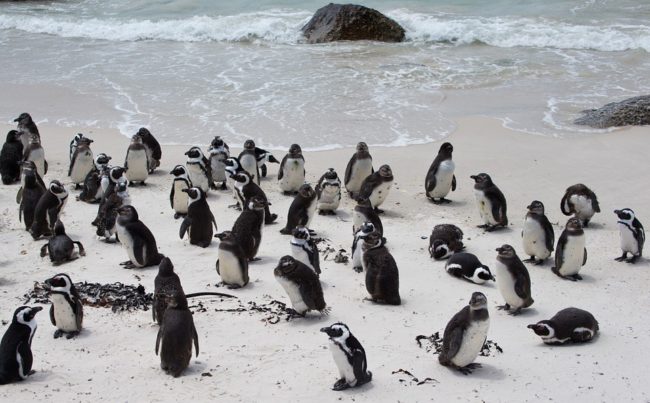
banded penguins
The common names for penguins belonging to this group are African, Magellanic, Galapagos, and Humboldt penguins. Here are a few facts about the banded penguins
-
The name a scientist would use to identify the African penguin is Spheniscus demersus. Demersus means “dip” in Latin and is a tribute to the diving abilities of this banded bird.
-
The Magellanic penguin shares its common name with its scientific name: Spheniscus magellanicus.
In 1519, Ferdinand Magellan became the first European to discover the region of Chile where these Magellanic penguins exist. This famous banded penguin is among many things named after that region.
-
The Galapagos penguin is known as Spheniscus mendiculus. Mendiculus means “little beggar.” Perhaps the scientists who named this species were not impressed by the behavior of the Galapagos penguins!
-
Humboldt penguin is the scientific name for Spheniscus humboldti. Alexander von Humboldt was a German adventurer who traveled through central South America searching for natural wonders. The penguin named after him was discovered in Peru by his work.
Brush-Tailed Penguins
Pygoscelis is a penguin genus whose name means “rump-legged” in Greek.
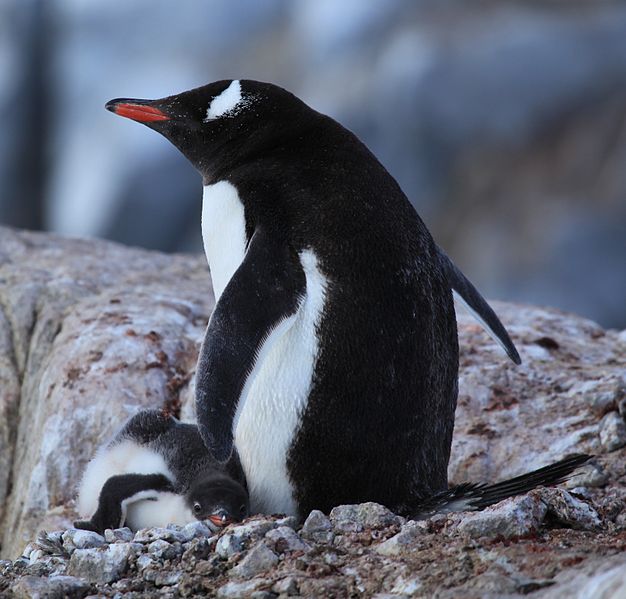
Brush-tailed penguins
Scientists commonly call these penguins brush-tails because their tails move from side to side while walking. This genus includes the Adélie, Chinstrap, and Gentoo penguins. Here are a few facts about the brush-tailed penguins
- The Adélie penguin is scientifically called Pygoscelis adeliae. The species name of this penguin also comes from an explorer, the Frenchman Jules Dumont d’Urville.
Adelie, on the other hand, is not named after him. Instead, Adelie was his wife’s name, and when he discovered this penguin while exploring Antarctica, he made the final act of romance by naming the adorable Adélie penguin after him.
-
The chinstrap penguin, or Pygoscelis antarcticus, can be found on many sub-Antarctic islands, and the species name reflects this fact. The chinstrap penguin’s common name comes from the — you guessed it — black stripe that runs down their chin.
-
Gentoo Penguins (Pygoscelis Papua) were left with the wrong name because their discoverers mistakenly believed they were in Papua New Guinea, although no penguins are known to live there. The origin of the generic term “Gentoo” is unclear.
The Largest Penguins
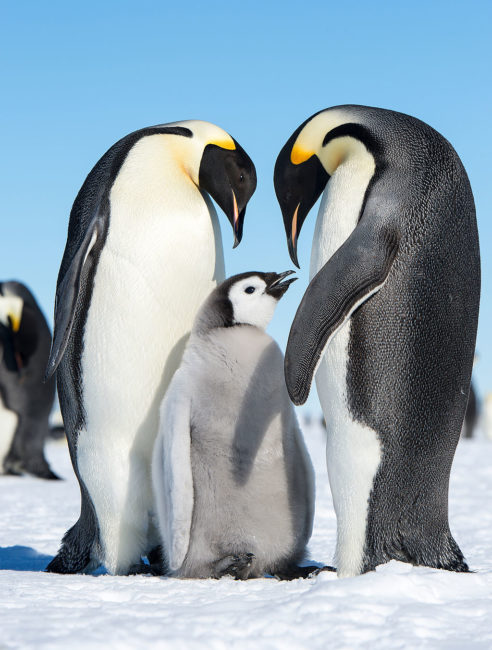
The largest penguins
Apten - for “wingless” and - dytes for “diver” could be part of the definition of the Aptenodytes genus.
This characterization is a bit off because penguins have two fins, making them great divers!
The 2 largest species of penguins belong to the Aptenodytes; Emperor and King Penguin. Here are a few facts about them
- Emperor penguins are called Aptenodytes forsteri. Forsteri comes from the discoverer Johann Reinhold Forster.
He was a naturalist who accompanied Captain Cook on his voyages and provided some of the first accounts of penguins, including those credited with discovering our most prominent living species of penguin, such as the emperor penguins.
- Their scientific name Aptenodytes patagonicus, king penguins, are found in the sub-Antarctic islands and the Patagonia region of South America.
Crested Penguins
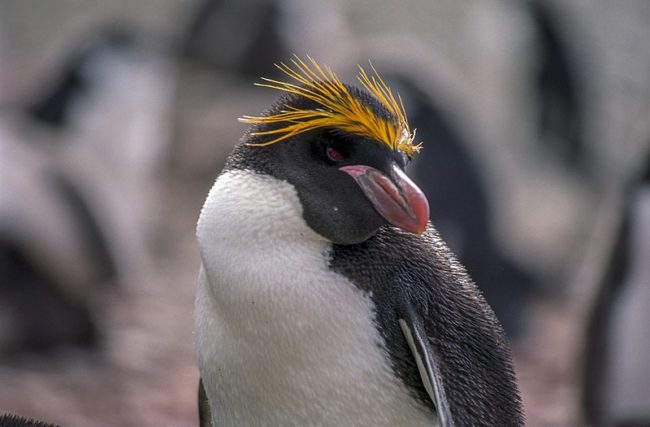
Crested Penguins
The common names for penguins belonging to this genus are erect-crested, Fiordland, Macaroni, Northern Rockhopper, Royal, Snare, and Southern Rockhopper penguins. Here are a few facts about the crested penguin
-
The Erect-Crested Penguin is Eudyptes Sclateri. Sclateri is given the name of this species as an homage to the British zoologist Philip Sclater, who is best known for mapping the world’s regions based on zoogeography.
-
The Fiordland penguin was named Eudyptes pachyrhynchus, the latter meaning “thick beak” in Greek.
-
Eudyptes Chrysolophus (meaning “golden crested”) is an excellent name for a macaroni penguin!
-
The northern rockhopper penguin is sometimes called Moseley’s penguin, hence the species name Eudyptes moseleyi.
Moseley was yet another naturalist who discovered H.M.S.Challenger. But while facing them, this species was described.
- Hermann Schlegel was a German naturalist who, strangely, was an opponent of Darwin’s natural selection theory.
In addition to the seven reptile species and one fish species, Schlegel also has a penguin species - the Royal penguin- Eudyptes schlegeli.
-
The snare penguin, Eudyptes robustus, is named because of its strong bill.
-
The southern rockhopper penguin (Eudyptes chrysocome) is aptly named the chrysocome as it means “golden hair.”
The Smallest Penguins
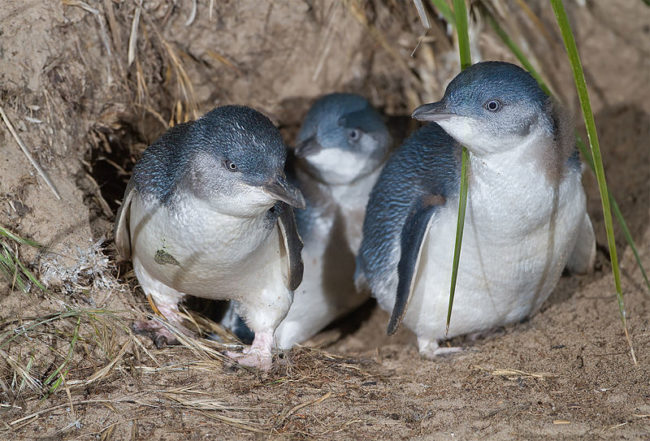
The smallest penguins
The Little Penguin is the only species in the Eudyptula genus. Eudyptus are crested penguins whose name means “good diver.”
The name means “excellent diver,” just like Eudyptes, but the - ula at the end is a diminutive suffix, signifying it is short. Therefore, the Eudiptula member is an excellent little diver.
- The Little Penguin is known as the species Eudyptula minor.
Minor, Of course, the little reinforces the smallness of this penguin.
A penguin on its own
The sole recognized living species of genus Megadyptes is a genuinely stunning bird that only lives in southeastern New Zealand, where they are known as “hoiho.” Maori for “noise shouter.”
The word Megadyptus means “big diver.” The yellow-eyed penguin fits into the phylogenetic tree of life here.
In comparison with Megadyptes, yellow-eyed penguins are its antipode. The first name of this species comes from the location where it breeds. As a part of a unit, Australia and New Zealand are known as antipodes.

Megadyptes, yellow-eyed penguins
They live in small colonies on Stewart Island and the Auckland Islands, Campbell Islands, and the Otago Peninsula.
It is one of the scarcest penguins, with just 3,000–4,000 adult individuals remaining in the wild.
Disease, habitat degradation, imported predators, and the effects of climate change are among its most significant concerns.
How many different penguin species can you spot on a cruise across the southern hemisphere?
There is a sum of 18 species of penguins on the planet. Still, the eight you’ll find most likely live in Antarctica, its surrounding islands, and the sub-Antarctic archipelago of South Georgia and the Falklands.
On our expedition voyages, we could commonly observe only eight varieties of penguins.
Two live exclusively on the Antarctic continent (the Emperor penguin and the Adélie penguin). Three species of penguins live in northern Antarctica and the sub-Antarctic islands (chinstraps, macaroni, and gentoos). Three species of penguins live exclusively in the sub-Antarctic (rockhoppers, megallanics, and kings). Here is a little about them
-
Emperor penguins may be the most emblematic. Emperor penguins grow up to 122 cm (48 in) long and weigh from 22 to 45 kg (49 to 99 lb), living predominantly in the Antarctic waters.
-
The most widely distributed penguin species globally, Adelies, live in North Antarctica. The researchers have an estimated 2.5 million breeding pairs of Adélie penguins in Antarctica.
-
Gentoo penguins: According to scientists, Gentoo penguin numbers will reach 300,000 breeding pairs in Antarctica. After Emperor penguins, they are only second in population decline.
-
Chinstrap penguins: Penguins inhabit both Antarctica and Sub-Antarctica. They are plentiful penguins in the world.
-
Macaroni Penguins: The estimated population of crested penguins living is 12 million pairs. They live in - Macaroni penguins breed on the Falkland Islands, South Georgia, South Sandwich, and the South Orkney Islands, all close to the Antarctic convergence.
-
Rockhopper Penguins: These are one of the smallest penguins in the world. “Rockhopper penguins” get their name from their preferred habitat, which tends to be rocky, wind-swept shorelines on islands north of Antarctica. They can be found primarily in those places.
-
Magellanic Penguins: This species is plentiful, located primarily in the Falkland Islands and South America.
However, in South Georgia and South Shetland, there remain a few wandering populations.
- King Penguin: These penguins are the second-largest species after the Emperor.
A total of 2.2 million breeding pairs of king penguins are thought to exist, feed on fish and squid, and live along the shorelines of sub-Antarctic islands.
They are the most marine of all penguins, indeed, birds. They spend more time at sea than any other.
How can we save penguins from extinction?
Further, nearly half of all penguin species are in danger of extinction. We won’t be able to stop it unless we act now. It’s a bad situation.
Penguin populations have plummeted to the point where they are now the world’s second-most endangered seabird group, after albatrosses, with 10 of the 18 penguin species facing extinction.
The African penguin and the Galapagos penguin are both considered endangered, along with the northern rockhoppers, the erect-crested penguin, and the yellow-eyed penguin. In the world, fewer than two thousand Galapagos penguins remain.
If you do not wish to see the sharp declines in the penguin populations, you need to improve their breeding success stories. There are several ways to help in this:
1. Fisheries Management: One possible solution is to close the fishing grounds around breeding colonies.
Creating marine protected zones around penguin colonies will safeguard schooling fish, minimize fishing competition, and increase the amount of fish available for penguins to eat.
2. Improving breeding/Nesting habitats: Implementing measures to limit habitat degradation/loss at penguin breeding sites can help reduce nest abandonment and improve breeding success.
3. Improving fishing practices: Penguins are caught in fishing nets and murdered. Educating the fishing industry and working together to develop new techniques and best practices can limit inadvertent sub-catch of penguins.
4. Hand-rearing chicks: Many African penguin chicks starve after being released. It happens due to heatwaves or coinciding with other breeding zones.
Conservation organizations are now taking steps to save the orphaned chicks. They are hand-reared and are released back into the wild when they reach a young age.
For Instance - More than 7000 hand-reared chicks have been released back into the wild since the Chick Bolstering Project. The Southern African Foundation launched it for the Conservation of Coastal Birds (SANCCOB) in 2006.
According to SANCCOB, “The orphan chicks have been hand-reared recognized as an essential and successful component of increasing wild populations.”
Follow-up studies have shown that the survival rate of hand-reared chicks released back into the wild is similar to that of parent-reared birds, making it a practical conservation intervention to boost wild populations.
Final Thoughts
Irrespective of their geographical location and the temperature they thrive on, penguins are still undisputedly “the coolest” and “the cutest” birds on the planet. We hope you feel the same too.
The facts to get cleared with answers are indeed interesting. I hope you got the response to the factual discussion that happened one day with your friends or family where you left the space filled with sheepish smiles.
Image Links:
Penguins’ by David Stanley / CC BY
Different species of penguins by PaleoMatt / CC BY
white-flippered form of a fairy penguin by Ben / CC BY
banded penguins by RonPorter / CC BY
Brush-tailed penguins by Liam Quinn / CC BY
The largest penguins by Christopher Michel / CC BY
Crested Penguins by Jerzy Strzelecki / CC BY
The smallest penguins by JJ Harrison / CC BY
Megadyptes, yellow-eyed penguins by Bernard Spragg. NZ / CC BY
Reference Links:
https://a-z-animals.com/animals/penguin/
https://en.wikipedia.org/wiki/Penguin
https://www.birdlife.org/birds/list-of-penguin-species/
https://seaworld.org/animals/all-about/penguin/classification/
https://www.penguinsinternational.org/tag/penguin-scientific-names/
https://oceanwide-expeditions.com/blog/meet-all-6-antarctic-penguin-species
https://friendofthesea.org/marine-conservation-projects-and-awareness/save-the-penguins/